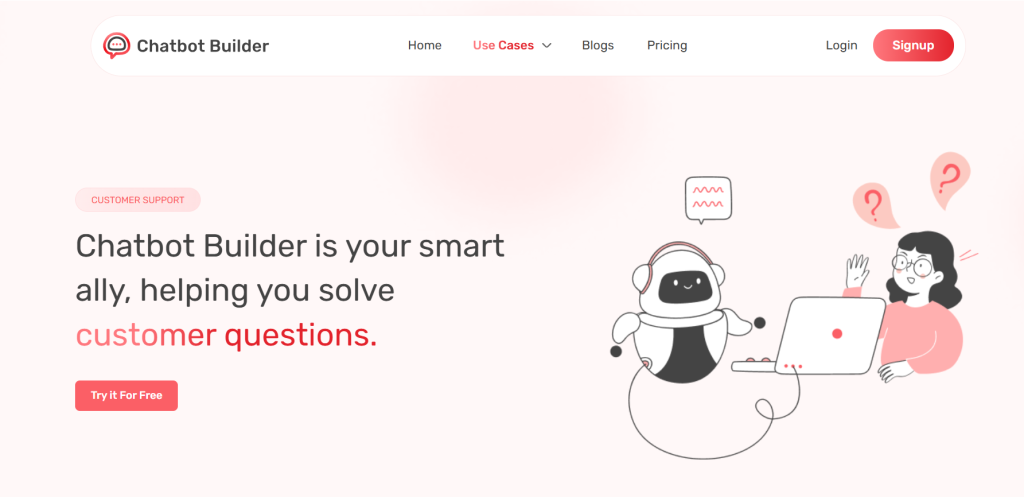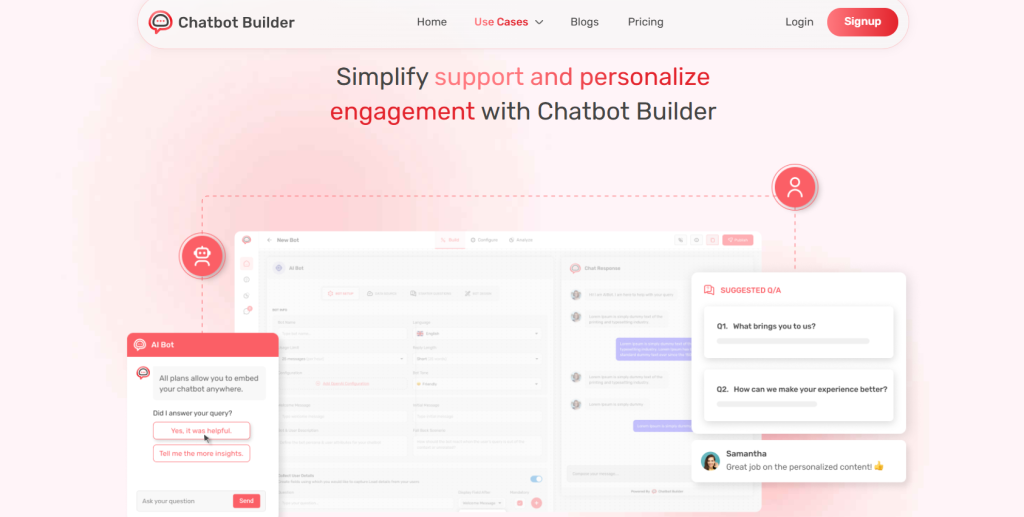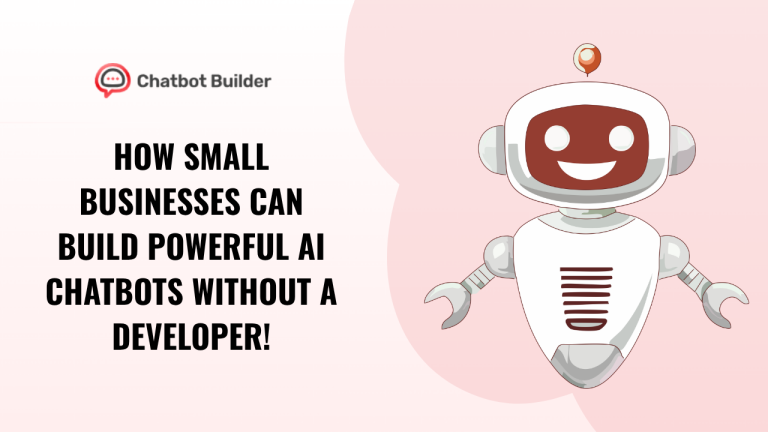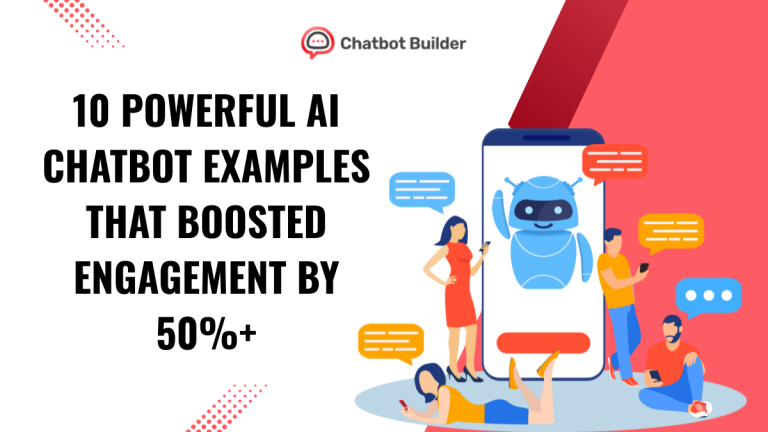You sit at the desk at 2 o’clock and you see support tickets piling up while your team sleeps. Sound familiar? Here’s the thing: your customers don’t care that it’s the middle of the night. They want answers now.
A customer support chatbot solves this exact problem. No drama, no complexity, just automated help that actually works.
Let me show you what’s working right now for companies that got this right.
What Is Customer Support Chatbot Technology?
Think of an AI customer support chatbot that is always as a team member, who never requires coffee breaks. This software uses artificial intelligence to handle the customer’s questions, solve problems and guide users through the site or app.
Difference between old school automated reactions and modern chatbot customer help? The new ones actually understand context. They learn from conversations. They get smarter over time.
Here is how it works in the background: When you ask a question, AI addresses the text, scans the basis for your knowledge and responds with the answers related to seconds. Can’t assist? It is the interaction of a human agent with already loaded full context.
Which AI Chatbot is best for customer help?
Let’s cut through the noise. The best AI chatbot for customer help depends on what you are really trying to achieve.
Running an online store? Your customer support AI chatbot platform for ecommerce needs different features than a SaaS company’s setup. E-commerce bots should handle order tracking, return policies, and product recommendations. SaaS bots need to troubleshoot technical issues and guide users through features.
For websites with straightforward FAQs, a customer support chatbot service for websites with basic natural language processing works fine. You don’t need to overthink this.
But if you handle complex technical questions? You want a customer support AI Chatbot platform that is integrated with your Helpdesk, CRM and product database. The ability to draw real-time information makes all the difference.
Ask yourself these questions:
What volume are we dealing with? Small businesses can start with simple chatbots for customer support solutions. High-volume operations need robust AI chatbot customer support systems that scale.
How complex are our queries? Product questions? Easy. Technical troubleshooting? You’ll want advanced AI capabilities.
Where do customers reach out? Your AI customer support chatbot platform should work for all the devices wherever your customers come from: website, mobile app, social media, or messaging apps.
Creating Your Customer Support AI Chatbot Strategy
This is where most of the businesses go wrong: they treat chatbots as a plug-and-play solution. Install it, forget it, see magic. Wrong.
The customer support AI chatbot solution that works requires strategy. Start by revising your current support data. What questions do you ask again and again? Does it take the longest time to solve problems? Where do customers drop off?
Your AI Customer Assistance Chatbot should first handle basic tasks. Password reset, ordering status, easy troubleshooting, working hours. This leaves your human representative to deal with the difficult issues that actually require decisions and sympathy.
When choosing Customer Assistance Chatbot Service, you must search these features:
Multilingual support if you serve global customers. Your bot should speak their language, literally.
Integration capabilities with your existing tools. A customer support AI chatbot development service for ecommerce that can’t access your order management system is useless.
Analysis and reporting so you know what works. Track resolution rates, customer satisfaction points and general error points.
Easy customization because your brand voice matters. Generic bot responses feel robotic and impersonal.
Human handoff protocols for when the bot reaches its limits. Smooth transitions keep customers happy.
How to Implement Chatbot for Customer Support

The implementation process doesn’t have to drag on for months. Here’s the realistic timeline that works:
Week 1-2: Data Collection
Collect your FAQ documents, support tickets, product information, and general customer issues. The customer support chatbot solution for websites learns from this content. More quality data equals better responses.
Week 3-4: Bot Configuration
Set up conversation flows, define intents (what customers are trying to accomplish), and write responses in your brand voice. Your customer support AI chatbot platform for websites should make this visual and intuitive.
Week 5-6: Testing Phase
Run internal tests. Have your team try to break it. Find the gaps in knowledge. Refine the responses. A customer support AI chatbot solution that launches too early creates more problems than it solves.
Week 7-8: Soft Launch
Deploy to a small percentage of traffic. Monitor conversations closely. Watch for confusion points. Adjust based on real user behavior.
Week 9+: Scale and Optimize
Gradually increase bot traffic. Keep analyzing performance. Add new capabilities based on what you learn.
How to Use Chatbot for Customer Support Without Annoying Everyone

Here’s a truth bomb: badly implemented chatbots make customers want to throw their phones. You’ve experienced this. We all have.
The customer support chatbot service that people actually like follows these principles:
Be upfront about what you are. Don’t pretend the bot is human. Customers appreciate honesty. Start with “Hi, I’m your AI assistant” and set proper expectations.
Make escape hatches obvious. Always offer a clear path to human support. Burying the “talk to a person” option deep in menus is customer service suicide.
Keep responses concise. Your AI chatbot for customer support shouldn’t write essays. Short, actionable answers win. If the explanation needs three paragraphs, offer to send detailed documentation instead.
Personalize when possible. Use customer names, reference their order history, acknowledge their loyalty. The best customer support AI chatbot platforms pull this data automatically.
Know when to quit. If the bot hasn’t solved the problem after 2-3 exchanges, transfer the customer to a human agent. Don’t loop customers through the same questions repeatedly.
Real Results: What Customer Support Chatbot Solutions Actually Deliver
Let’s talk numbers. A properly configured AI customer support chatbot typically handles 60-80% of routine inquiries without human intervention. That’s not theoretical; that’s what companies are seeing right now.
Response times drop from hours to seconds. Your customer support AI chatbot platform for ecommerce can answer questions about order status, shipping policies, and product details instantly. No waiting in queues. No limitations due to business hours.
The financial impact? Support costs can drop 30-50% while customer satisfaction scores go up. Sounds counterintuitive until you realize customers prefer quick answers from bots over slow responses from humans.
Your human agents get better too. When they’re not drowning in “what’s your return policy” questions, they can focus on complex issues where they actually add value. Job satisfaction improves. Burnout decreases. Turnover drops.
Measuring Success: Metrics That Matter
Installing a customer support chatbot solution isn’t the finish line. You need to track what’s actually working.
Resolution rate: What percentage of conversations does the bot fully resolve without human help? Start tracking this from day one. If you’re below 60%, something’s wrong with your setup.
Customer satisfaction (CSAT): Ask users to rate their bot experience. Simple thumbs up/down works. Detailed surveys work better. Target scores above 4 out of 5.
Containment rate: How many customers who interact with your chatbot customer support system never need to talk to a human? Higher is better, but don’t celebrate if customers are just giving up.
Average handling time: How long does the typical bot conversation take? Compare this to human agent times. Your customer support AI chatbot should be significantly faster for routine issues.
Handoff quality: When the bot transfers to humans, how often can agents resolve the issue on first contact? Good bots provide context. Great ones set up humans for success.
Common Mistakes to Avoid
I’ve seen companies waste serious money on customer support chatbot platforms that never deliver results. Here’s what kills implementations:
Skimping on training data. Your AI chatbot customer support is only as smart as the information you feed it. Garbage in, garbage out. Spend time building a solid knowledge base.
Ignoring maintenance. Products change. Policies update. Your customer support AI chatbot solution needs regular updates or it’ll start giving wrong answers. Schedule monthly reviews minimum.
Over-promising capabilities. Don’t claim your bot can do things it can’t. Set realistic expectations. Better to surprise customers with unexpected helpfulness than disappoint them with overstated abilities.
Forgetting mobile users. Most support requests come from phones now. Your customer support chatbot service for websites must work flawlessly on small screens with touch interfaces.
Neglecting personality. A boring bot is a forgettable bot. Your customer support AI chatbot platform should reflect your brand personality. Funny? Professional? Friendly? Choose one and commit.
The Future Is Already Here
The gap between what is customer support chatbot technology today versus two years ago? Massive. Natural language understanding keeps improving. Context retention gets better. Multilingual support expands.
What’s coming next? Voice-enabled chatbot for customer support that feels like talking to a real person. Visual recognition so customers can snap a photo of their problem. Predictive support that solves issues before customers even ask.
The companies winning right now aren’t waiting for perfect technology. They’re starting with what works today and improving as they go.
Your competitors are probably already using a customer support AI chatbot development service for ecommerce or their specific industry. The question isn’t whether to implement this technology. It’s whether you can afford to fall further behind.
Getting Started Today
Pick a customer support chatbot platform and run a pilot. Start small. Test with real customers. Learn what works for your specific audience.
The question ‘Which is the best AI chatbot for customer service?’ has a straightforward answer: the one that you actually are going to put in place and support. Perfect is the enemy of done.
Your customers are already comfortable talking to bots. They’re doing it on Amazon, at their bank, with their cable company. Your website is a weird one if you don’t offer this option. The customer support chatbot solution that transforms your business is the one you deploy this quarter, not the one you’re still researching next year. Start a 14 days free trial now.
Frequently Asked Questions
If you’re getting the same questions repeatedly and your team is spending hours on basic inquiries, yes. Even simple customer support chatbot service options pay for themselves quickly by freeing up your time for revenue-generating activities.
No, and that’s not the goal. The best implementations use chatbot customer support for routine questions while humans handle complex issues, angry customers, and situations requiring empathy and judgment. Think augmentation, not replacement.
Most businesses see positive returns within 3-6 months. Initial costs include setup and training, but ongoing expenses are low compared to hiring additional support staff. Track your metrics from day one so you can prove the value.
Some will. That’s why the human handoff option matters so much. But research shows most customers prefer fast bot answers over slow human responses for simple questions. Give them the choice and let behavior tell you what works.
Modern platforms require minimal coding. If you can use WordPress or Shopify, you can set up a basic AI customer support chatbot. More advanced customization might need developer help, but start simple and build from there.













